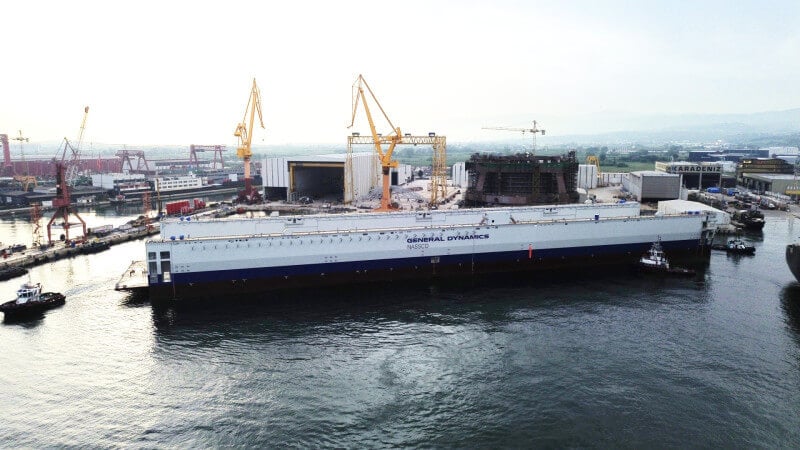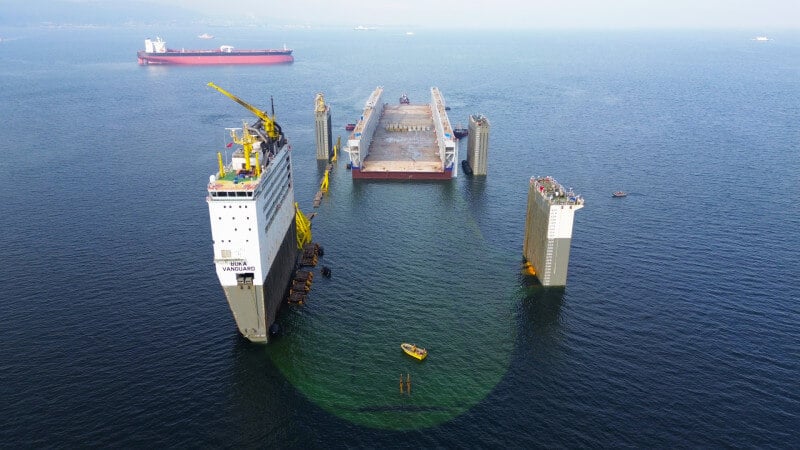Daniel Aritonang graduated from high school in May, 2018, hoping to find a job. Short and lithe, he lived in the coastal village of Batu Lungun, Indonesia, where his father owned an auto shop. Aritonang spent his free time rebuilding engines in the shop, occasionally sneaking away to drag race his blue Yamaha motorcycle on the village’s backroads.
Like thousands of other Indonesians, Aritonang answered an advertisement to work aboard a Chinese fishing ship, traveling the world, combing the high seas. Eighteen months later, he was dead, his body dropped off, beaten and bloated on a dock in Montevideo, Uruguay. The mysterious death was hardly unusual: for the previous 5 years that same port saw one dead body per month dropped off, mostly from Chinese fishing ships, which have, the world over, a reputation as the most brutal.
When Aritonang climbed onto his assigned squid ship, called the Zhen Fa 7, he joined what may be the largest maritime operation the world has ever known. In the past few decades, partly in an effort to project its influence abroad, China has dramatically expanded its distant-water fishing fleet. Chinese firms now own or operate terminals in ninety-five foreign ports. China estimates that it has twenty-seven hundred distant-water fishing ships, though this figure does not include vessels in contested waters; public records and satellite imaging suggest that the fleet may be closer to sixty-five hundred ships. (The U.S. and the E.U., by contrast, have fewer than three hundred distant-water fishing vessels each.) Some ships that appear to be fishing vessels press territorial claims in contested waters, including in the South China Sea and around Taiwan. “This may look like a fishing fleet, but, in certain places, it’s also serving military purposes,” Ian Ralby, who runs I.R. Consilium, a maritime-security firm, said.
But China’s preëminence at sea has come at a cost. The country is largely unresponsive to international laws, and its fleet is the worst perpetrator of illegal fishing in the world, helping drive species to the brink of extinction. Its ships are also rife with labor trafficking, debt bondage, violence, criminal neglect, and death. “The human-rights abuses on these ships are happening on an industrial and global scale,” Steve Trent, the C.E.O. of the Environmental Justice Foundation, said.
The investigation into Aritonang's death is part of Season 2 of the Outlaw Ocean Podcast, which derives from 4 years of reporting, mostly at sea. A team of reporters traversed a half dozen countries and crossed thousands of miles of ocean, while boarding Chinese squid jiggers to talk to workers in this otherwise invisible industry. As the trade war between the US and China has escalated in recent months, the interconnectedness of these two massive economies has become more obvious than ever with tariffs and counter-tariffs spiking prices. But nowhere is China's economic and political power more pronounced than at sea and this, at times, has dire consequences for workers and the environment.
Before taking the job on the Chinese ship, Aritonang had struggled to find work. The rate of unemployment in his native Indonesia was high: more than 5.5 percent nationally, and more than 16 per cent for youth. Climate change has made matters worse; many of Indonesia’s 17,000 islands are sinking. Aritonang’s home is roughly 100 yards from the Indian Ocean. His village is losing coast from sea level rise at an average of between 10 and 15 yards a year. When Hengki Anhar, a local friend, suggested the two of them go abroad together on a fishing boat, Aritonang agreed. Friends and family were surprised by his decision, because the demands of the job were so high and the pay so low. But a job was a job, and both he and Anhar desperately needed work.
In 2019, Aritonang and Anhar contacted a “manning” agency based in Central Java. In the maritime world, manning agencies recruit and supply workers to fishing ships. They handle everything, including paycheques, work contracts, plane tickets, port fees and visas. They are poorly regulated, frequently abusive and have been connected to human trafficking. Following the agency’s instructions, Aritonang and Anhar went to the city of Tegal. They took medical exams and handed over their passports and bank documents. For the next two months, they waited to hear if they had been hired. Money ran short. Through Facebook messenger, Aritonang wrote to his friend Firmandes Nugraha, asking for help paying for food. Nugraha urged him to return home. “You don’t even know how to swim,” Nugraha reminded him.
Eventually assignments came through, and, in September 2019, Aritonang appeared in a Facebook photo with other Indonesians waiting in Busan, South Korea, to board their fishing vessels. “Just a bunch of not-high-ranking people who want to be successful by having a bright future,” Aritonang said on Facebook. Aritonang and Anhar boarded the Zhen Fa 7, which set sail across the Pacific. The ship’s crew numbered 30 men: 20 from China, and the remaining 10 from Indonesia. The vessel would spend the next months chasing squid in international waters off the coast of South America.
In December, 2020, the Zhen Fa 7 left the vicinity of the Galapagos Islands, sailed around the southern tip of South America, through the Strait of Magellan, and made its way north to an immensely productive high-seas squid fishery known as the Blue Hole, about 360 miles above the Falkland Islands. The bounty was plentiful there, and the captain began working his crew around the clock. A month later, Aritonang fell severely ill. In all likelihood he was suffering from a disease called beriberi, caused by a deficiency of vitamin B1, also known as thiamine. Sometimes called “rice disease,” and often an indication of conditions of captivity, beriberi has historically broken out on ships and in prisons, asylums and migrant camps—anywhere diets have consisted mainly of white rice or wheat flour, both very poor sources of thiamine. On board the Zhen Fa 7 the captain issued each Indonesian two boxes of Supermi instant noodles per week for free. The costs for any additional snacks, coffee, alcohol or cigarettes were deducted from their salaries. The Indonesians were paid US$250 per month, along with a US$20 bonus per ton of squid caught.
The Indonesians on board begged the captain to get Aritonang onshore medical attention, but the captain refused. Later, when asked to explain the captain’s refusal, Anhar, Aritonang’s friend and crewmate, said, “There was still a lot of squid. We were in the middle of an operation.” By February 2021, Aritonang could no longer stand. He moaned in pain, slipping in and out of consciousness. Incensed, the Indonesian crew threatened to strike and the captain finally acquiesced. On March 2, Aritonang was transferred to a nearby fuel tanker called the Marlin, whose crew six days later dropped him off in Montevideo. By then it was too late. For several hours, emergency room doctors struggled to keep him alive, while Jesica Reyes, a local interpreter who had been summoned to speak to Aritonang in Bahasa, Indonesia’s official language, waited anxiously in the hall. Eventually the doctors emerged from the emergency room to tell her that he had died.
In an e-mail, the Zhen Fa 7’s owner, Rongcheng Wangdao Ocean Aquatic Products Co. Ltd. declined to comment on Aritonang’s death but said that it had found no evidence of complaints from the crew about their living or working conditions on the vessel. The company added that it had handed the matter over to the China Overseas Fisheries Association, which regulates the industry. Questions submitted to that agency by the Outlaw Ocean Project went unanswered.
In the months after the investigation was published by hundreds of news outlets, hearings were held in the Canadian parliament, at the EU commission, and in the US Congress to voice outrage at the wider pattern of illegal fishing and worker abuse revealed in China's fishing fleet and in the plants that processed its catch. And in May, 2025, authorities with the US Customs and Border Protection announced that due to forced labor revealed on the Zhen Fa 7, the agency was banning the import of any seafood tied to this vessel.
Marcella Boehler is global publishing editor at The Outlaw Ocean Project, a non-profit journalism organization based in Washington D.C. that produces investigative stories about human rights, environment and labor concerns on the two thirds of the planet covered by water. Season Two of The Outlaw Ocean Project's podcast series may be found here.


 At the invitation of Supreme Leader Khamenei, Haj Mahmoud Karimi chants a dirge at the July 5 Husseiniyya meeting (
At the invitation of Supreme Leader Khamenei, Haj Mahmoud Karimi chants a dirge at the July 5 Husseiniyya meeting (